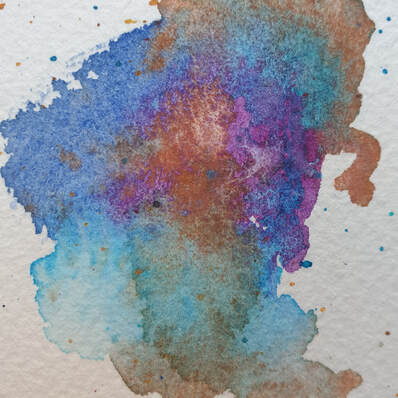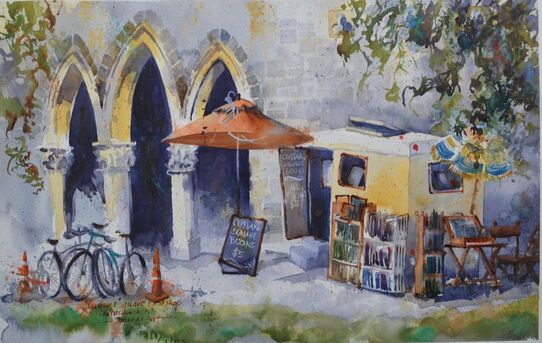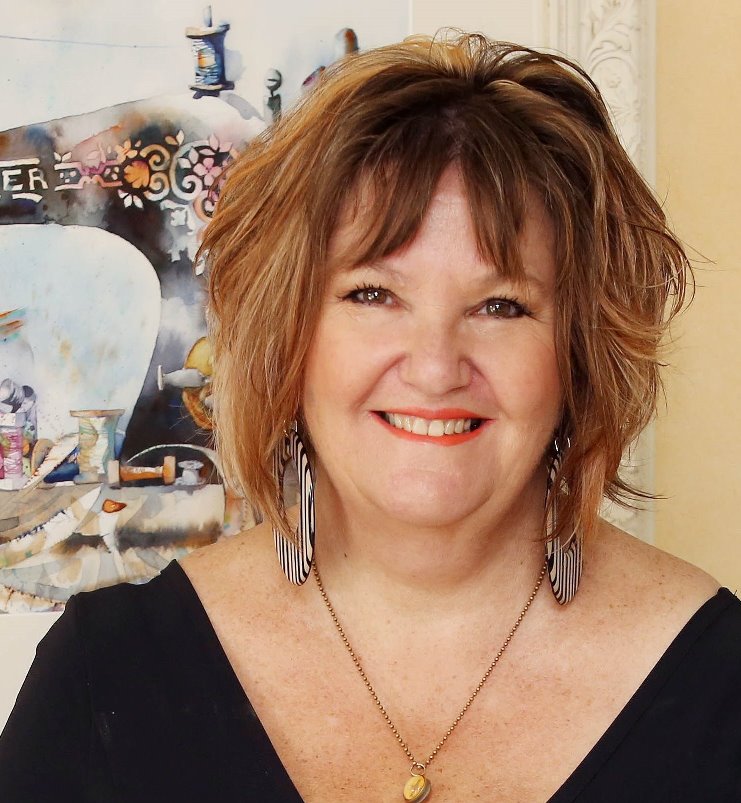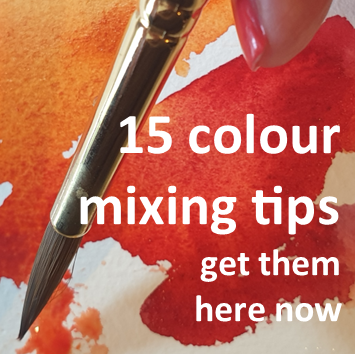
KM says …
Mixing pigments! Trying to learn off You tube as best I can. Also paying for a few zoom sessions. No one mentions pigment numbers. I hear a name, but different brands use different pigments and different names and granulation varies for same pigment but different brand! I've mixed a lot of Mud from not paying attention to the number of pigments. I have a mostly transparent palette. I know, I know. Learn by doing and learn from experience. Love your positivity! Have a great time in Italy. Cheers KM The problem with pigment numbers is that every manufacturer has their own recipe for a colour starting with a particular pigment, numbered and annotated on the colour label. And that’s pretty much where it ends! Each manufacturer’s recipe will include other processes (eg kiln firing) and other additives and binders that, in varying quantities change the appearance of the colour name, making each a unique blend resulting in a unique colour. For example Transparent Orange is the same pigment as Light Red but light red undergoes kiln firing which alters it’s characteristics to create a different colour, level of opacity, granulation etc etc. somewhat similar to Winsor Blue red and green shades. Sometimes a pigment number can help you find a hue in another brand – one of my favourite painters uses a different brand to me, I love her colours – what’s more, I managed to find them using the pigments numbers cited by the manufacturer. This was a lucky find as I discovered I had the correct colours already in my favourite brand – they’re close enough given different computer monitor settings etc. There is much discussion about only using “single” pigment colours. This is really a misdirection … I regularly use 6, 7 and 8 colours to achieve the value and temperature my painting needs. I also regularly use a brand known for combining 3-4 pigments – I’ve never had a problem mixing their colours. This leads us to colours labelled as “hue”. In other words, a combination of pigments to achieve the colour of a particular pigment, eg Cobalt blue hue. The characteristics may differ ever so slightly from the genuine pigment, I assume this is to keep prices down for very expensive pigments eg cobalts, or reduce reliance on increasingly rare pigments eg quinacridone gold. Focus on irrelevant elements just take us away from painting and feeds our fear with details that may or may not impact our painting - we just need get on with it!! non ferma cari amici!!
0 Comments
 Custard Square Bookshop, Christchurch, New Zealand Custard Square Bookshop, Christchurch, New Zealand
Jude asked:
Do you always plan out everything ie... colours for everything and where bikes, cones etc might go? Yes I do plan everything out BUT as I'm a little haphazard (read Arty-Farty - aka rip sh*t and bust!) I'm also happy to let go and see where the "unplan" takes me. So sometimes my painting is not like my sketch (sometimes my sketches are not like the scene!!). You know that I pretty much always map out my design in a thumbnail sketch first. This sketch is about studying the pattern of the light and the dark and working out a composition. It's not about detail. I'm working out how I can use them to move the viewers eye around the painting. this sketch also helps me to learn about the scene/subject, it helps me to discover areas that could become a problem, or elements that I can take advantage of eg interlocking and overlapping shapes. I make a "shopping list" of elements in the scene that I may or may not want to add into my painting and choose the ones that I like or help me to tell my story. Once I've drawn my map onto my watercolour paper, I sometimes find there are areas that could be utilised or need a little filling up, these ideas come from my shopping list. with regard to palette selection, I'm often smitten with a particular palette for a year or two and then replace a pigment or two. I usually use the same foundation palette for my realism work, based on transparent primary pigments, just the three plus burnt sienna, the same three I recommend to beginners. These colours will mix into every colour you could possibly need - just as well if you're in lockdown and no art supply store!! Divertiti tutti!! |
AuthorPaintBox Tips, secrets, random thoughts, Poetry in watercolour is made in the freedom of the here and now. Amanda Brett Inspiration exists, but it has to find you working - Pablo Picasso There are no mistakes in watercolour, just some extra surprises!! Categories
All
What my readers and viewers have to say
Your emails are so informative! I must confess I've watched a couple of your demos from beginning to end, and it makes me want to watercolor!!! I've only ever painted with oil or acrylics and haven't know how to begin with WC. Your content is excellent!
Susan VN Hi Amanda
Thank you for your tips. They inspired me to practise and I realised I haven’t been loading the brush properly. I learnt about adding more paint, and not water, to washes. In today’s tips I like the idea of painting with purpose. Your tips are very helpful. I very much appreciate receiving them. Elizabeth Hi Amanda I enjoyed your post and generous tips. Looked up Dan Burt I begin to see that you can colour any subject to give it pizazz so long as the tone and form is correct Certainly adding value now to my attempts Thanks heaps Annie
Yes very wise words. Agree with not fussing and agree with comments about good quality paint. Well written and inspirational as always. Cheers Janet xxxx Archives
July 2023
Copyright © 2022 All images and text on Amanda's blog and website are the the legal property of Amanda Brett and may not be reproduced without express permission from Amanda Brett or her authorised agent. Thank you for respecting her art and the livelihood of all artists.
|



